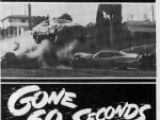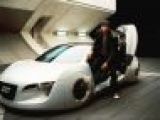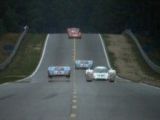Ever since the clumsy start of the Lumiere family in cinematography, cars have had an important role in most of the movies which became famous. By definition, a car is a moving object, just like the moving pictures in a movie. Along history, we've even started to recognize movies which marked "our memory stick" after a certain car model/s that appeared in it.
Till the '60's came along, we couldn't have said that, especially because in the first half of the previous century you could have picked any color for your car you liked, as long as it was black. Starting with the '50's though, the situation changed. Elvis Presley shootings actually abused his '55 pink Cadillac Fleetwood, the only car he kept till he died. Almost ten years later, Sir Sean Connery was sending James Bond fans into panic attacks from the steering wheel of his Aston Martin DB 5, "tuned" with gadgets dreamed by John Stears, from the famous Pinewood Studios.
Aston Martin's adventure in the company of the best known fictional (the real 007 was codenamed ST1) spy ever lasted for over 20 years, with a slight pause in which BMW came to the rescue with the Z3, 7 Series, K 1200 R and Z8 models.
Later on, at the end of the '60's, a Miura was making Lamborghini fans of the time (and not only them) cry because of its terrible destruction by the Charlie Croker character in the beginning of the "Italian job" flick. But the director chilled the auto lovers, as the rest of the movie was abundant with Minis flying through the streets of Turin accompanied by Aston Martins and Jaguars. The '60's and '70's period was the most prolific from the point of view of cars which became stars.
In 1968, the immortal (not really, actually) Steve McQueen has lifted a Mustang Fastback to the rank of automotive icon in one of the longest car chases in history, in the movie "Bullit". Two years earlier, James Garner was driving beasts with hundreds of horse power through the streets of Monaco, in "Grand Prix".
Three years after "Bullit", McQueen was returning to the kind of movies which impregnate in car fanatics' brains decades in a row. To better symbolize the type of feelings "Le Mans" can give you, I only have to remind you that there's no audible dialog between the characters in the first 37 minutes of the movie. Nothing can be heard except engine sounds without any catalyst or silencers.
The seventies were full of the "Gone in sixty seconds" talks, a 97 minutes film in which 93 cars were destroyed, probably making it the bloodiest movie in history from this point of view. The modern era of flicks in which cars have secondary parts re-began with movies like the "Minority Report", the "Fast and Furious" trilogy, "The Transporter", "I.Robot" and remakes or sequels to older movies. The only problem today is that the large car manufacturers are auctioning for their own models to be exposed in big cinema productions.
In "Minority Report", Tom Cruise is piloting a futuristic Lexus created by Toyota's luxury division especially for this film, and in "I Robot" Will Smith is co-hosting a different "I'm-never-going-to-drive" type of Audi concept for which the krauts auctioned sums with many zeros in the hope that it will appear in the movie.
Cinema has received the "industry" title when the world realized it is one of the best ways to promote a product in history. Till a few decades ago, when the idea of a "blockbuster" wasn't yet coming together, the cars which became stars at the same time as the actors they were "acting" with were still part of the "romantic" era of cars.
The only work car manufacturers marketing departments (those who had one) had to do until then, was to make advertising posters with different views of a car. Now, the promotion methods have extended in every little corner of what you can call "media", while the new cinema flicks in which our babies with four wheels make cameos are practically one huge extended commercial.

 14 DAY TRIAL //
14 DAY TRIAL // 



